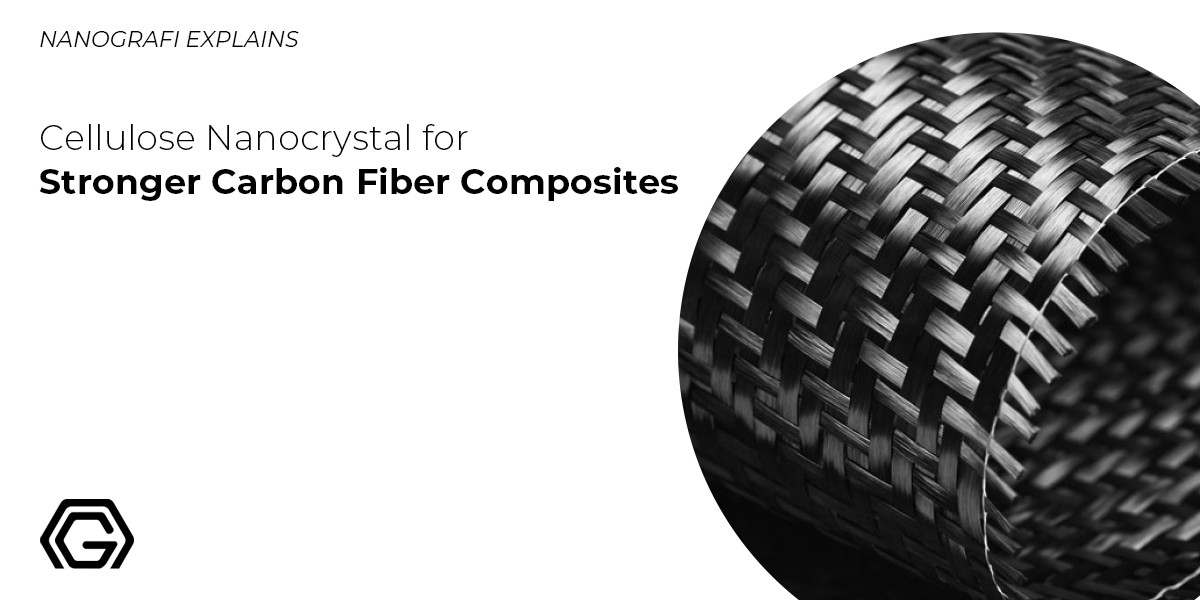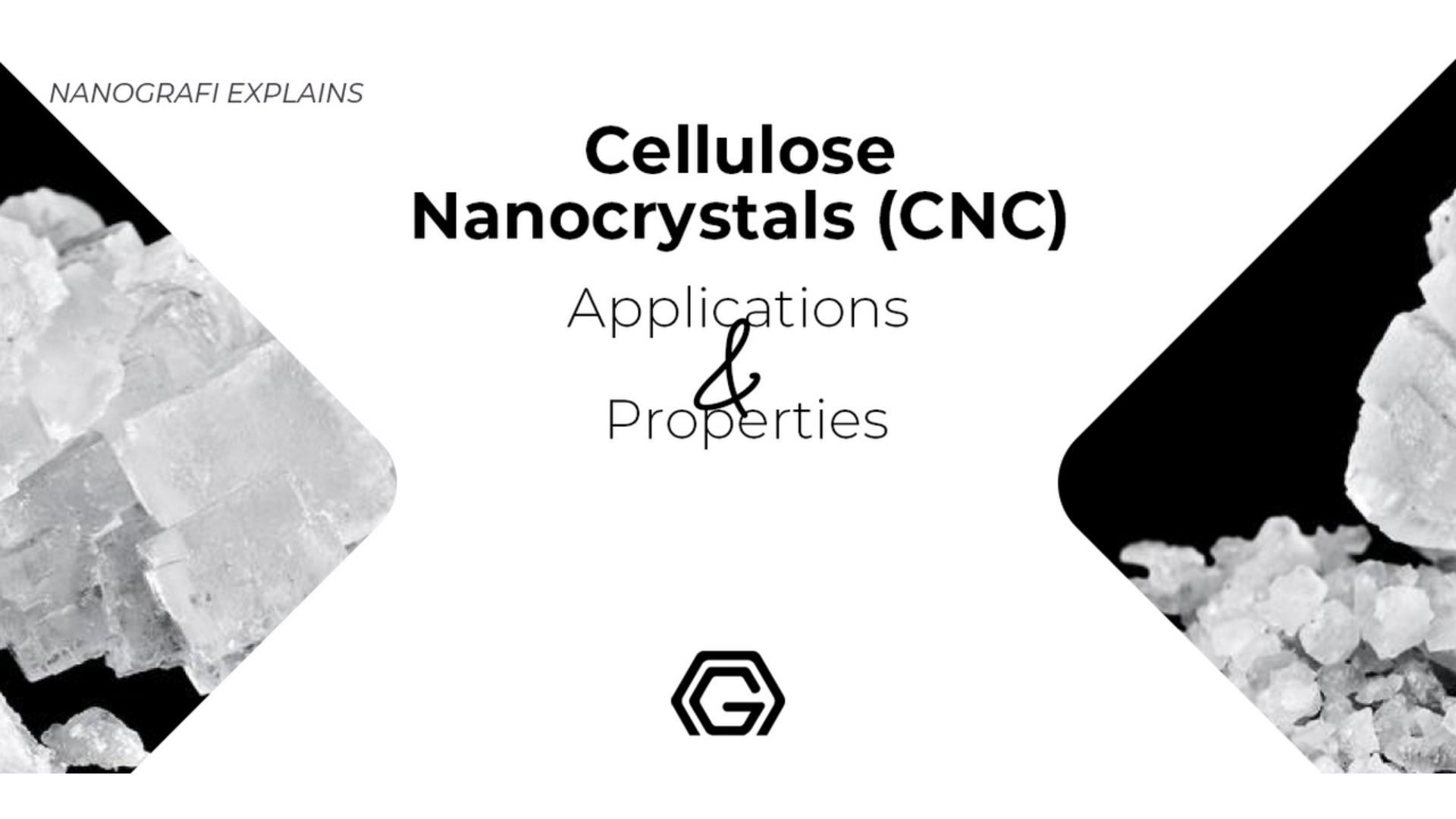Cellulose Nanocrystal for Stronger Carbon Fiber Composites
Polymers that are reinforced by ultra-fine strands of carbon fibers are regarded as perfect samples of composite materials being as light as a feather and strong enough to replace steel.
This class of reinforced composite polymers have been attracting a lot of attention because of their versatility in applications in numerous industries. In particular, carbon nanotubes can significantly increase the functionality of these composites. Nonetheless, the chemical processing employed to incorporate carbon nanotubes, distribute them and heterogeneously unevenly across the composite restricting a range of useful qualities and causing poor strength.
Introduction
According to a study by Texas University, a natural plant product known as cellulose nanocrystals are used to coat and pin carbon nanotubes so uniformly on the carbon fiber composites.1
Carbon-Fiber Composites
This technique functions considerably faster than conventional methods and makes it possible to design carbon fiber composites to fall into the nanoscopic scale. Basically, composites are designed on layered substrates. For example, polymeric composites are made of fibers with numerous layers such as carbon fibers and a matrix of a particular polymer. This layered structure is indeed a sign of the composites’ strength or weakness through which any sort of damage in the layers can consequently lead to fractures which are technically called delamination. Carbon nanotubes are used as additives in order to strengthen carbon fiber composites and give them some desirable functionalities including thermal and electrical conductivity. Technically, the chemical processes and modification techniques that are employed to incorporate the carbon nanotubes throughout the bulk of composites clump up the nanoparticles and reduce the overall benefits and advantages of the addition of these particles. In fact, the problem with these nanostructures and nanoparticles is partly similar to what happens when some coarse coffee is added to milk and forms an agglomerated powder that sticks together. Therefore, it is necessary to separate carbon nanotubes from each other for better design and application. To get over this problem cellulose which can easily be achieved as an extraction from recycled wood pulp is used to facilitate the uniform distribution of carbon nanotubes throughout the composite. These cellulose nanocrystals contain hydrophilic segments within their molecules capable of absorbing water along with another segment with hydrophobic behavior. This unique molecular structure comes up with an excellent solution to synthesize composites on the nanoscale.1
Cellulose
Cellulose occurs abundantly and naturally as raw material on Earth amounting to billions of tons made by many different plant species. Technically, cellulose is a cheap, lightweight, thermally stable organic compound and one of the most common agents to meet the standards of sustainable chemistry since it is naturally biodegradable as well as renewable. Within plants, cellulose fibers are produced by microfibrils that are highly crystalline entities. In the past years, cellulose has drawn a lot of attention due to its considerable impact on areas like flexible electronics and displays, textiles, pharmaceuticals, sensors, laminates, coatings, food, and actuators. 2. Chemically, cellulose fibers comprise a chain of hundreds to thousands of D-glucose in a linear configuration. They are regarded as the important structural members of different species of algae and the walls of green plant cells. The walls of plants cells are composed of cellulose microfibrils with crystalline structure with a width of about 93 nm containing some 20 to 40 fully extended cellulose chains which behave like strengthened steel in the fabric of the walls and are surrounded by polysaccharides including hydrophobic non-crystalline lignin and hemicellulose which are nanocrystalline structures too. Therefore, it should be taken into consideration that cellulose-based nanostructures like cellulose nanofibers are originally biomolecules and abundantly found on Earth as well as being synthesized naturally in larger quantities through the natural photosynthesis procedure 3.
To find out more, you can read Cellulose Nanocrystals (CNC) Applications and Properties.
Stronger Composites with the Incorporation of Carbon Nanotubes and Cellulose Nanocrystals
Chemically speaking, the hydrophobic section of cellulose nanocrystals has an affinity to bind to carbon fibers and anchor them onto the matrix of the polymer. On the contrary, the hydrophilic part of the cellulose nanocrystals facilitates the dispersing of carbon nanotube fibers evenly and uniformly instead of getting clumped or agglomerated. The experimental activities involve the application of commercially available carbon fiber cloth. In so doing, a solution of cellulose nanocrystals along with carbon nanotubes to be coated on carbon fiber cloth mixed together by applying a strong vibration. The resulting material is left to dry and then a layer of resin is spread on it to gradually create a carbon nanotubes-coated polymer composite. After a sample of the composite is examined by electron microscopy, it is revealed that the cellulose nanocrystals are observed at the tip of carbon nanotubes causing them to orientate in the same direction. In addition, cellulose nanocrystals appear to enhance the composite resistance upon bending by the value of about 33% and the interlaminar strength of about 40% based on the mechanical properties of the material under extreme loading conditions. This technique has taken the advantage of designing composites from nanostructured materials through employing carbon cellulose nanocrystals. This approach makes it possible to have control over the composite materials and polymers as well as their properties and scale up the processing of hybrid composites advantages in numerous industries like car manufacturing and aeronautics.1
This new finding shows that integrating carbon in carbon fiber-reinforced polymer (CFRP) composites can greatly improve their structural and functional characterizations. On the contrary, it has to be taken into consideration that chemical functionalization that causes the heterogeneous and non-uniform distribution of carbon nanotubes can consequently affect the final specifications and hinder manufacturing scalability. In this research project, a scalable and new functionalization technique is suggested to integrate carbon nanotubes into carbon fiber-reinforced polymers without further chemical modification or the application of surfactants. As it was mentioned earlier, cellulose nanocrystals are employed as supplementary nanostructures to facilitate the uniform dispersion of carbon nanotubes and stabilize them in water to finally use them to coat carbon fibers. In this method, two main coating techniques are employed which involve simultaneous immersion and sonication known as IS-coating and simple immersion as I-coating. The surface chemistry characterization data of carbon fibers supports that the simple immersion creates a significant amount of a polar oxygen groups in the coated carbon fiber that contains cellulose nanocrystals and carbon nanotubes.1
Conclusion
The results of a recent study show that cellulose can help stabilize and disperse carbon nanotubes in water for the purpose of coating carbon fibers before its application in manufacturing hybrid carbon fiber reinforced polymers without depending on time-consuming and costly chemical functionalization. The simple immersion and simultaneous immersion coating methods have been used in the process of the final coating of carbon fibers and the results confirm that simple immersion turns out to be the most efficient technique to facilitate uniform dispersion and distribution of carbon nanotubes composites.
To discover the latest articles in cellulose nanocrystal, you can visit Blografi.
References
Applications of Polymer-Based composites - Nanografi Nano Technology. (n.d.). Retrieved April 19, 2024, from https://nanografi.com/blog/applications-of-polymerbased-composites-/
Carbon Nanotube Fibers - Nanografi Nano Technology. (n.d.). Retrieved April 19, 2024, from https://nanografi.com/blog/carbon-nanotube-fibers/
Cellulose Nanocrystals (CNC), Applications and Properties - Nanografi Nano Technology. (n.d.). Retrieved April 19, 2024, from https://nanografi.com/blog/cellulose-nanocrystals-cnc-applications-and-properties/
Examining Nanocellulose: A Promising Approach - Nanografi - Nanografi Nano Technology. (n.d.). Retrieved April 19, 2024, from https://nanografi.com/blog/examining-nanocellulose-a-promising-approach-nanografi/
Isogai, A. Review Development of completely dispersed cellulose nano fi bers. 94, 161–179 (2018).
Kafy, A. et al. Cellulose long fibers fabricated from cellulose nanofibers and its strong and tough characteristics. Sci. Rep.7, 1–8 (2017).
Shariatnia, S. et al. Hybrid Cellulose Nanocrystal-Bonded Carbon Nanotubes/Carbon Fiber Polymer Composites for Structural Applications. ACS Appl. Nano Mater.3, 5421–5436 (2020).
Recent Posts
-
Reducing the Carbon Footprint of Nanomaterials
The production of nanomaterials is vital for numerous advanced applications, from healthcare to elec …26th Apr 2024 -
Nanocomposites in Food Packaging
The utilization of nanocomposites in food packaging represents a significant advancement in the fiel …19th Apr 2024 -
What is the Difference Between 7075 and 6061 Aluminum Alloy?
When comparing 7075 aluminum alloy to 6061 aluminum alloy, it's essential to understand their disti …5th Apr 2024







